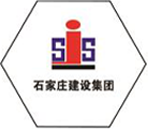
10 月 . 22, 2024 06:02
Back to list
Understanding the Function and Importance of Pressure Relief Valves in Safety Systems
Understanding Relief Valves Crucial Components in Pressure Management
Relief valves are essential components in various industrial systems, designed to maintain pressure within safe limits and prevent catastrophic failures. By automatically releasing excess pressure, these valves play a critical role in ensuring the safety and efficiency of equipment, particularly in applications involving liquids and gases.
What is a Relief Valve?
A relief valve is a type of safety device that helps protect systems from overpressure conditions. These conditions may arise due to equipment malfunction, changes in supply or demand, or temperature fluctuations. When the pressure within a system exceeds a predetermined threshold, the relief valve opens, allowing fluid to escape and thereby reducing pressure to safer levels. Once the pressure falls back within acceptable limits, the valve closes, preventing further loss of fluid.
Types of Relief Valves
There are several types of relief valves, each designed for specific applications
1. Spring-Loaded Relief Valves These are the most common type, utilizing a spring mechanism to hold the valve closed. When system pressure exceeds the spring’s set force, the valve opens, allowing fluid to escape.
2. Pilot-Operated Relief Valves This type uses a pilot mechanism to control the opening and closing of the main valve. It is generally more precise and can handle higher pressures than spring-loaded valves.
3. Vacuum Relief Valves Designed specifically for systems that may experience a vacuum, these valves prevent the formation of a vacuum that could damage the system by allowing air to enter when negative pressure occurs.
4. Blow-off Valves Often used in gas systems, blow-off valves release gas when pressure exceeds a certain limit, protecting downstream equipment.
relief valve

Applications of Relief Valves
Relief valves are critical in numerous industries, including
- Oil and Gas In exploration and production, relief valves protect machinery and pipelines from the extreme pressures common in these environments. - Chemical Processing They prevent dangerous overpressure scenarios in reactors and distillation columns where reactions can be exothermic, potentially leading to explosions.
- Power Generation Steam systems utilize relief valves to manage pressure generated by boiling water and steam, ensuring safe operation of turbines and other equipment.
- HVAC Systems In heating, ventilation, and air conditioning (HVAC) systems, relief valves prevent pressure build-up, ensuring optimal performance and reducing wear on components.
Importance of Proper Sizing and Maintenance
Choosing the right relief valve involves careful consideration of several factors, including flow rate, set pressure, and the type of fluid. Incorrectly sized valves can either release pressure too late, risking equipment damage, or release too soon, leading to unnecessary outages and loss of resources.
Regular maintenance and testing of relief valves are crucial to their effective operation. This includes inspecting for signs of wear, ensuring the valve opens and closes as intended, and calibrating the set pressure to match system requirements. Neglecting this important aspect can jeopardize the safety and efficiency of an entire system.
Conclusion
Relief valves are a vital aspect of modern engineering, providing an essential safeguard against overpressure scenarios. They ensure the stability and safety of systems across various industries, from oil and gas to power generation and beyond. Understanding the different types, applications, and maintenance needs of relief valves is fundamental for engineers and technicians tasked with designing and operating complex systems. By prioritizing safety and efficiency, relief valves contribute significantly to preventing accidents, protecting human life, and preserving the integrity of industrial operations. As technology advances and pressures in systems become more demanding, the role of relief valves will remain more critical than ever, underscoring the need for ongoing innovation and attention in this field.
Next:
Latest news
-
Unlocking The Quality Gas Pressure ReducersNewsNov.01,2024
-
The Role of Gas Pressure Reducing StationsNewsNov.01,2024
-
The Importance and Functionality of Safety Relief ValvesNewsNov.01,2024
-
The Essential Role of Safety Valves in Natural Gas ApplicationsNewsNov.01,2024
-
The Essential Role of Gas Pressure RegulatorsNewsNov.01,2024
-
Enhance Your Premium Gas FiltersNewsNov.01,2024

